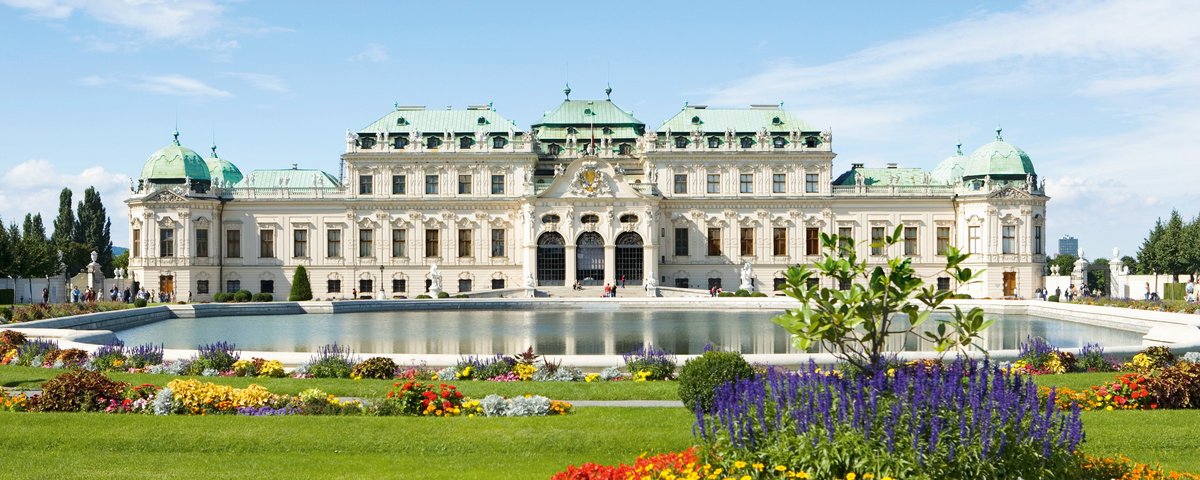City Trips along the Danube with A-ROSA River Cruises
Fall under Vienna’s spell. Buildings steeped in history, heavenly gardens and parks as well as a number of museums make the Austrian capital an exclusive travel destination.
The traditional coffee culture invites you to taste a Wiener Melange (‘Viennese blend’) with a sweet Sachertorte in the afternoon. In the evening, you can dine in the Wiener Riesenrad – a Ferris wheel – over a romantic candlelight dinner above the rooftops of the metropolis or enjoy classical music at the State Opera. Even more delicacies and a multifaceted range of cultural activities await you in this European metropolis.
And the thing that also makes Vienna special as the regional capital of Austria: The First Viennese School. Practically no other city has spawned as many world-famous composers and thus contributed its part to the great masterpieces of Classical music.
Travelling to Vienna by ship
Step on board the A-ROSA cruise ships and discover the city of Vienna from the river.
You will dock directly in the centre of Vienna during a Danube cruise with the A-ROSA BELLA, the A-ROSA DONNA, the A-ROSA MIA, the A-ROSA RIVA and the A-ROSA FLORA. You can reach the centre of the metropolis by foot; walk in the footsteps of Empress Sisi and explore the ostentatious lifestyle of the House of Habsburg. In the evening, A-ROSA pampering awaits you. Reflect on the day’s events during a massage in the spa or a culinary highlight at our high-quality buffets while the ship gently sets off to the next port along the Danube. City trips could not be any more relaxed.
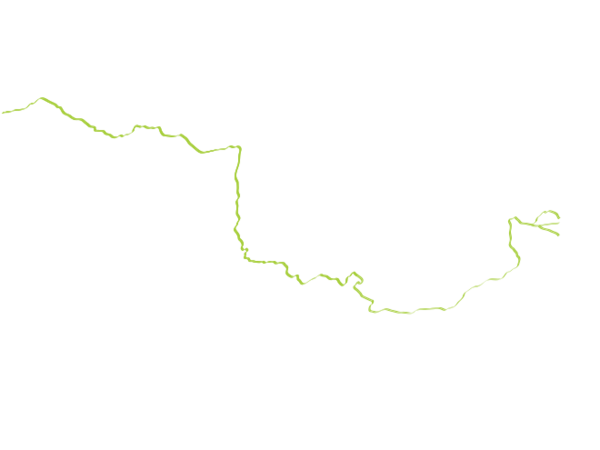
A-ROSA River Cruises to Vienna
The best Sights and Destinations in Vienna
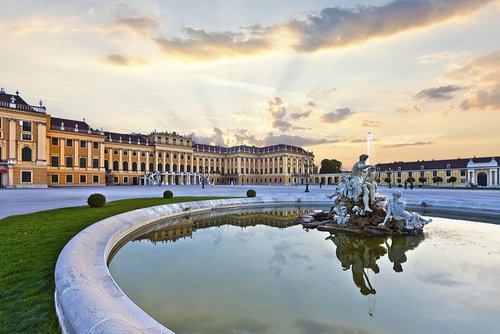
SCHÖNBRUNN PALACE
The palace – the residence of the famous Empress Sisi – has not only historical significance, but also a magnificent location and an opulent interior. Leopold I had had it built as a hunting lodge in the late 17th century. Half a century later, Maria Theresa had it expanded into a true Baroque palace. The living spaces of Sisi and Emperor Franz Joseph I, which have been preserved in their entirety, are particularly impressive. The adjoining palace garden, the palace theatre, the Viennese Neptune Fountain and the zoological garden are also worth a visit.
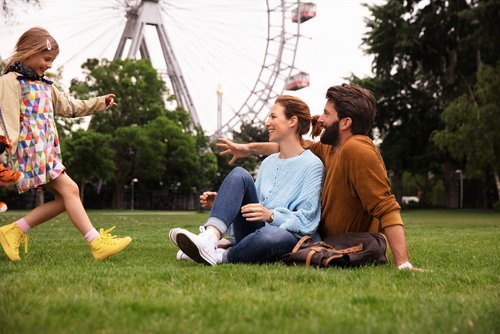
THE PRATER AND THE FERRIS WHEEL
The Prater invites you to take a relaxed walk in the river landscape of the Danube. The spacious area is made up of idyllic meadows and forests. You will find the Wiener Riesenrad, a Ferris wheel, in the north-western part of the Prater. Enjoy Vienna from above and treat yourself and your nearest and dearest to a romantic evening dinner in one of the Ferris wheel’s luxurious gondolas. Every quarter of an hour, you will be served with new delicacies on ground level before you are lifted into the air again. Perfect for wedding days, those newly in love or happy couples.
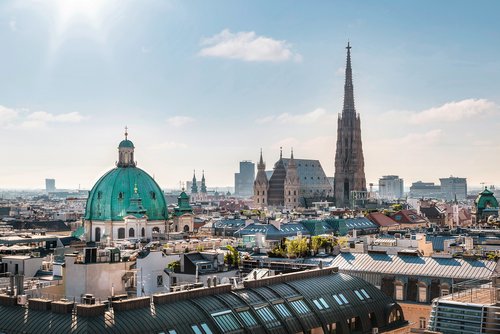
ST. STEPHEN´S CATHEDRAL
The opulent St. Stephen’s Cathedral is one of the landmarks of Vienna. Admire the architecture of this building that was consecrated in 1147, or listen to the sound of its 13 bells. Even today, exhibitions, weddings and religious services are still held in the cathedral. The 136-metre-high southern tower, an architectural masterpiece, rises up majestically from Vienna’s city centre. Locals lovingly call the epic construction ‘Steffi’. The cathedral is named after Saint Stephen, the first martyr of Christianity.

HELDENPLATZ
Heldenplatz, situated at the outer Burgplatz, was designed by Emperor Franz Joseph I as part of the Kaiserforum (an architectural project at the Hofburg that was never realised). The name Heldenplatz (‘Heroes’ Square’) comes from the two equestrian monuments, both of which were created by Anton Dominik Fernkorn. The older of the two served as militaristic glorification of the dynasty. Shortly before the monument was unveiled, however, Austria was defeated by Italy in the Battle of Solferino. The monument is remarkable because the horse is depicted jumping up, so that only the two back legs are touching the base.
MARIA-THERESIEN-PLATZ
Take a relaxed stroll across Maria-Theresien-Platz. The square is situated opposite the Hofburg Imperial Palace at the Ringstraße (Ring Road). Especially worth seeing is the Maria Theresa monument, which was built in honour of the empress of the same name. Maria Theresa was the head of the Habsburg monarchy from 1740 to 1780. The sovereign monument is considered the most significant of its kind in Vienna. The Kunsthistorisches Museum (Museum of Art History) and the Natural History Museum frame Maria-Theresien-Platz and invite visitors on a cultural journey of discovery.

VIENNA CENTRAL CEMETRY
The Vienna Central Cemetery is one of the largest in Europe, with a surface area of around 2.5 km2. Magnificent gates and impressive monuments await visitors in the vast park, in addition to the well-maintained graves. The Art Nouveau structures create a special atmosphere. Numerous ‘Ehrengräber’ (a distinction for extraordinary services and achievements) and honorary graves also make the cemetery attractive for visitors. Many great composers and poets found their final resting place here. Those buried at the Vienna Central Cemetery include Ludwig von Beethoven and Johann Strauss.

VIENNA STATE OPERA
The Vienna State Opera has a long tradition and still offers an interesting programme today. Talented ensembles and international stars put on excellent performances of various ballets and operas, accompanied by the State Opera Orchestra. The Vienna Opera House opened on 25 May 1869 in the presence of Sisi and Emperor Franz Joseph I. The building’s façade, with its elegant Neo-Renaissance architecture, has been preserved in its original form. Large parts of the building were damaged by bombing during the Second World War, and were later reconstructed.
VIENNA STADTPARK
The Vienna Stadtpark (City Park) has been adding a touch of beauty to the Austrian capital since around 1860. With a surface area of around 65,000 m2, it presents an attractive recreational area. It stretches from the 1st to the 3rd district in Vienna. The area used to contain the water glacis, which served as a place for amusement and relaxation. As well as diverse plants that blossom almost all year round, the vast park is home to magnificent monuments, fountains, a light installation and an elegant administrative building, as well as a Kursalon (music hall). The salon has been maintained in the style of the Italian Renaissance.
